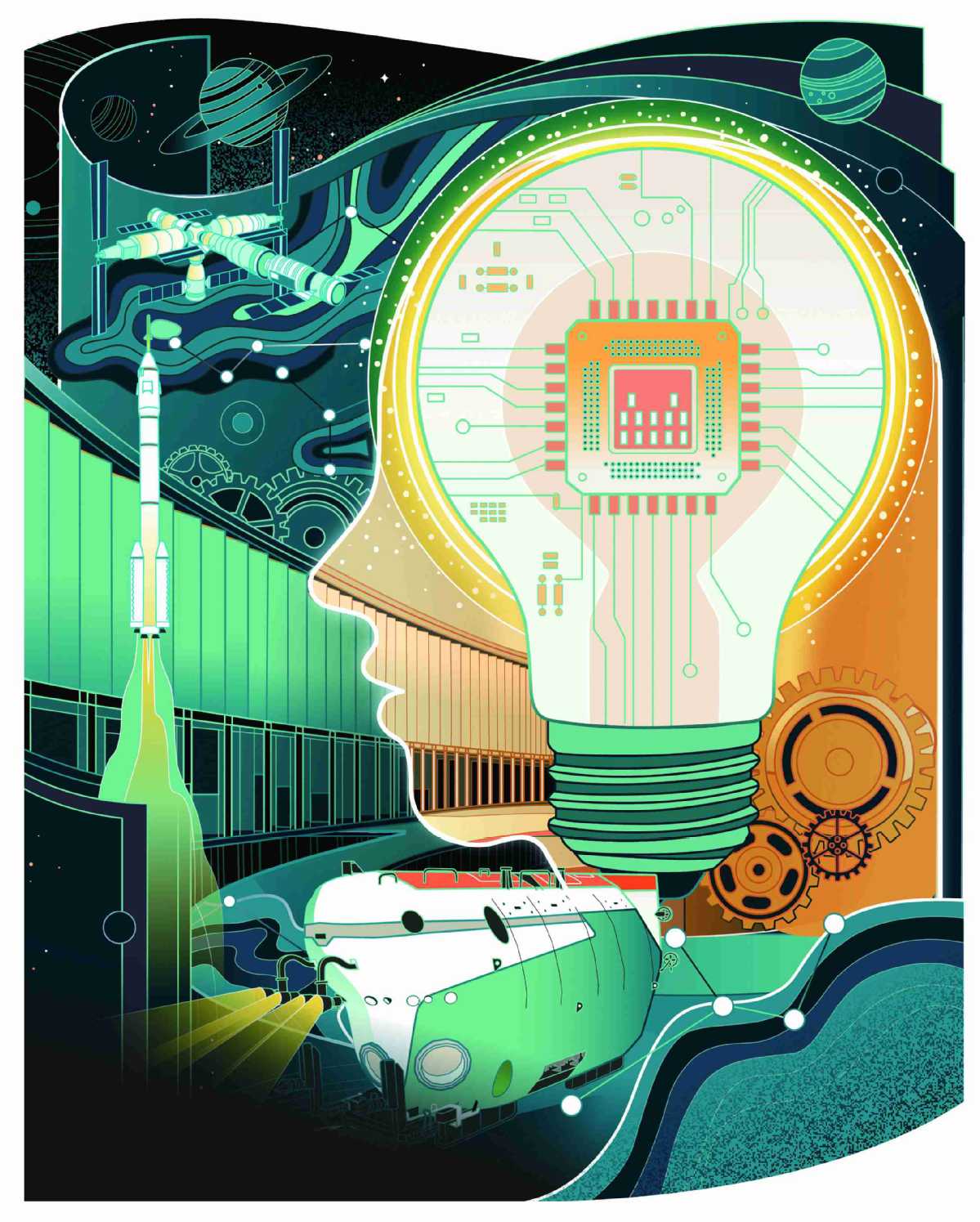Final frontier is no longer alien
By Yang Yang | China Daily | Updated: 2023-05-02 07:59

Scientific frontiers
Explaining why sci-fi has become so popular in China, director Guo writes in an article published in People's Daily: "The progress in science and technology provides reality basis for the popularization and acceptance of sci-fi literature and art."
In the past decade, China has launched manned spaceships, rovers and probes to the moon and Mars, and also a sun observation satellite. People have been used to see Chinese astronauts working and living in the space station Tiangong, so it is convincing to see in movies Chinese astronauts walking out of a space station and working, Guo writes.
As Liu said in a previous interview, modernization in China draws sci-fi closer to people.
However, science and technology has been developing so fast that it poses challenges to sci-fi writers, because the genre is not only about imagination, but also a deduction based on one's knowledge about science and technology, Ji says.
"We realized that science and technology have been developing too fast, and there are so many specialized directions within one academic discipline that it's more demanding for sci-fi creators to learn about scientific frontiers, especially transdisciplinary knowledge," Ji explains.
"If we cannot imagine the future based on the present, our imagination is unlikely to influence the future. If we cannot see the current scientific development and learn from scientists and engineers about the changes, it's impossible for us to estimate the possibilities in the future."
In 2019, a group of sci-fi writers paid a visit to State-owned enterprises in areas including photovoltaic power, hydropower, nuclear energy, electric power transmission, and high-end underground construction. These involved various entities, including State Power Investment Corp, China National Nuclear Corp, State Grid Corp of China, China Railway Group Ltd and China Railway Construction Corp.
In 2021, another group visited the Technology and Engineering Center for Space Utilization under the Chinese Academy of Sciences.
As one of the organizers, Ji says that through talking with engineers and scientists, writers could know about their vision of the near future, technologies possibly developed in the future and some extreme situations of scientific development, and based on that vision, sci-fi writers could then further imagine the far future.
Inspiring journey
Two books of sci-fi short stories based on the two visits — Daguo Zhongqi (The Pillars of a Great Power) and Zaofang Xingchen (Visits to Stars) were published in April last year and in February.
Zhou Wen, one of the participating writers, said at the book launch of Daguo Zhongqi that she was stunned by stellar energy, seeing in Northwest China's Qinghai province the largest photovoltaic power station in the world.
The endless sea of solar panels looked like deep blue silent sunflowers, from which the world's first ultrahigh voltage electricity of 100 percent clean energy would travel more than 1,560 kilometers before illuminating thousands of homes in central China, she says.
Ji says: "We were all amazed by the sea of solar panels, and underneath were sheep grazing. It's a very futuristic scene. A scene that is very hard to imagine when you sit at home."
Liu writes in a recommendation of Daguo Zhongqi: "The power of human science and technology has created many wonders that cannot be seen or imagined by many people throughout their life. The stunning feelings that many sci-fi works have brought to us are actually the representation and extension of the mental experience when the writers are confronted with those wonders.
"These stories are created by the writers after they visit and experience the most advanced and magnificent technological projects in China. They bring the views that have existed but are not common before us."
Zhou created a highly sensitive photoelectric material in her short story Luoguang (The Falling Light) which can facilitate spaceships to travel far distances with electricity generated from weak starlight. The idea was praised by Zhang Zhi, deputy general manager of SPIC Integrated Smart Energy Science and Technology, as promising since photovoltaic devices were first used in space technology.
Original stories
Commenting on Liang Ling's Keli Zhizhong (Inside the Particle), Han says that the description of the electricity technology is detailed and convincing.
The story is about a doctor who meets an engineer from the State Grid during a flight he takes to save a patient and enters a world that is created by the electricity of megavolts.
"Without the visit, it's impossible to create such a unique plot, and what is more fantastic about the work is that the writer is not confined by reality. She talks about the doubts of the truth about existence and universe," Han says.
Ji's team also organized sci-fi writers to see the launch of Chang'e-series probes and the dark matter particle explorer Wukong, and also the installment of the last part of the Five-hundred-meter Aperture Spherical Telescope, the world's largest single dish telescope.
"During the visits, sci-fi writers all said that the reality develops faster than imagined," Ji says.
In essence, sci-fi is a way of thinking, she says.
The fast development of science and technology in China urges people to think about their relationship with science and technology, so scifi, in whichever forms, literature, painting, animation, film or TV series, naturally becomes more popular in today's China, she says.
Although many people read classic sci-fi imported from the US or Japan, readers need to read original Chinese sci-fi works because the world has changed tremendously, she says.
One particular interesting thing is Chinese people's idea about cyberpunk, Ji says.
The earliest cyberpunk is a reflection of a kind of highly mechanic civilization, a combination of high-end technology and low-end life. However, in China, people's recognition of cyberpunk is relatively positive.
"They will say this city, this street or this shopping mall looks very cyberpunk," she says.
"This kind of change shows how Chinese people's life has been changed or improved by internet in the past 10 years."
Another trendy change lies in the sci-fi works of artists or writers, whose ideas of the space used to be deeply influenced by English works, but now since Chinese spacecraft have traveled to the moon, Mars, or even more distant places, artists or writers started to portray different contents in their works.
For example, Japanese writer Taiyo Fujii wrote in his sci-fi story about Chinese people working in space and returning to the Earth for Spring Festival, which readers now regard as normal.
























